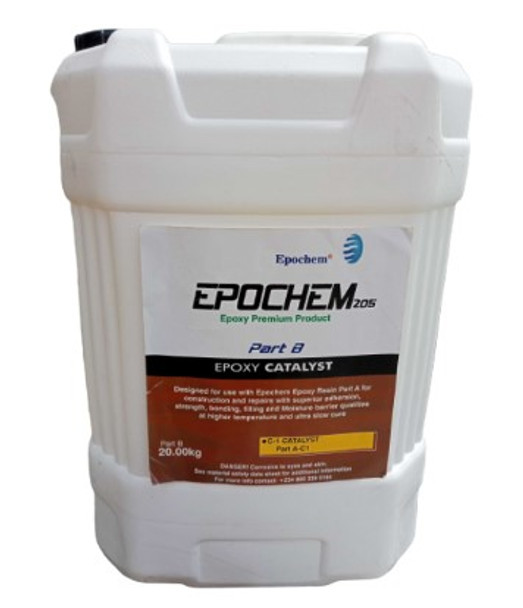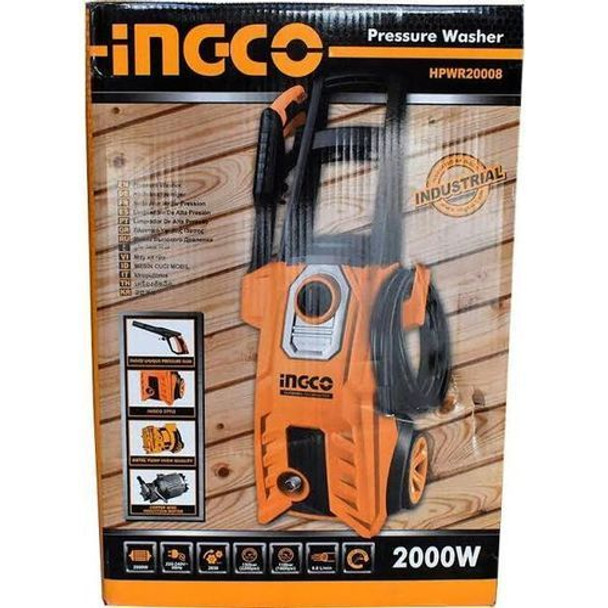The Definitive Guide to Protective Coatings: Types, Applications, and Benefits
- Diverse Coating Types: Understanding the variety of protective coatings, such as epoxy, polyurethane, ceramic, and zinc, is crucial for selecting the right one based on specific environmental conditions and material requirements.
- Application Specificity: Each type of protective coating has specific applications and benefits, making it important to match the coating type with the specific needs of the project, whether for corrosion resistance, UV protection, or aesthetic enhancement.
- Advanced Application Techniques: Techniques such as spray application, brushing, rolling, and dipping play critical roles in the effectiveness of coatings. Proper application ensures maximum durability and protection.
- Significant Benefits: Protective coatings offer substantial benefits including extending the lifespan of materials, enhancing aesthetic appeal, and providing significant cost savings by reducing maintenance needs and prolonging intervals between repairs.
- Innovative Advances: Staying informed about advances in coating technology, such as nano-coatings and eco-friendly options, can provide enhanced protection while also supporting environmental sustainability efforts.
 Epoxy Resin Epochem 105, 20kg keg
Epoxy Resin Epochem 105, 20kg keg
Introduction
Protective coatings play a crucial role in extending the durability and functionality of various industrial, commercial, and residential surfaces. These coatings serve as a barrier against environmental threats such as corrosion, UV damage, chemical exposure, and physical wear. By applying the right type of coating, the lifespan of materials can be significantly extended, ensuring that structures not only last longer but also maintain their aesthetic and structural integrity over time.
Protective coatings are essential in various industries due to their ability to extend the life and enhance the performance of surfaces. These coatings come in several types, including epoxy, polyurethane, ceramic, and zinc, each tailored to specific environmental and operational conditions. Epoxy coatings, known for their exceptional adhesion and durability, are ideal for industrial floors and heavy machinery. Polyurethane coatings are favored for their aesthetic qualities and UV resistance, making them suitable for exterior applications where appearance and longevity are critical. Ceramic coatings offer superior heat resistance, commonly used in automotive components to withstand extreme temperatures. Meanwhile, zinc coatings are employed primarily for their ability to protect steel structures from corrosion through galvanic protection. The applications of these coatings are vast, ranging from safeguarding pipelines and marine structures against corrosion, to enhancing the aesthetic appeal and scratch resistance of automotive and architectural surfaces. The benefits of using protective coatings are significant, providing increased durability, cost-effectiveness by reducing maintenance needs, and improved safety by preventing material degradation.
This guide aims to provide a comprehensive overview of protective coatings, discussing their types, applications, and the benefits they offer. From industry professionals looking to enhance their operational equipment to homeowners interested in preserving their investment, this guide will offer valuable insights and practical advice on selecting and applying the right coatings to meet specific needs.
Understanding Protective Coatings
Protective coatings are specialized coverings that are applied to the surface of materials to protect them from adverse environmental conditions. These coatings are designed to prevent rust, reduce wear, repel water, and provide heat and fire resistance. Their primary function is to increase a material's durability and resistance to external factors that can cause degradation.
The effectiveness of protective coatings stems from their chemical properties. Coatings are usually made from polymers like epoxy, polyurethane, or acrylics, which form a durable film over the surface. This film acts as a shield that prevents corrosive substances from reaching the material underneath. Advanced formulations may also include additives like UV stabilizers, rust inhibitors, and fungicides to enhance the protective properties.
 Epochem Polyurethane Floor Paint
Epochem Polyurethane Floor Paint
Types of Protective Coatings
1. Epoxy Coatings
Epoxy coatings are renowned for their strength and adhesive properties. They are commonly used in environments that require robust, waterproof barriers. Typical applications include factory floors, pipelines, and heavy machinery. Epoxy coatings are particularly effective in preventing corrosion and withstanding harsh chemicals.
2. Polyurethane Coatings
Polyurethane coatings are valued for their flexibility and UV resistance, making them ideal for outdoor applications where weather resistance is crucial. They are often used on surfaces that experience significant temperature fluctuations and can provide a glossy, attractive finish that does not fade over time.
3. Ceramic Coatings
Ceramic coatings are known for their ability to provide excellent heat resistance. In the automotive industry, they are applied to engine parts and exhaust systems to maintain performance under high temperatures. They also add a hard, dense layer of protection that can greatly extend the life of treated surfaces.
This portion of the guide covers the foundational knowledge needed to understand the different types of protective coatings and their primary functions. Further sections will delve deeper into other specific types of coatings, their applications, and detailed maintenance tips.
4. Zinc Coatings
Zinc coatings are primarily used for their ability to provide galvanic protection, which makes them an excellent choice for combating rust and corrosion in steel structures. The process of galvanizing, which involves coating steel or iron with zinc, protects the base metal by acting as a sacrificial anode if exposed to corrosive elements. This is essential for outdoor structures like bridges, railings, and highway barriers.
5. Specialty Coatings
Specialty coatings, including fluoropolymer and silicone-based coatings, offer unique properties for specific applications. Fluoropolymers are extremely resistant to chemicals, heat, and electrical conditions, making them suitable for aerospace and electronic applications. Silicone coatings are used for their flexibility and high-temperature resistance, commonly applied in the automotive and industrial sectors to protect components from heat and moisture.
Application Techniques
1. Spray Application
Spray application is the most common method for applying protective coatings due to its efficiency and ability to cover large areas uniformly. This technique requires specialized equipment that can vary based on the type of coating material used. Proper ventilation and operator safety measures, such as respirators and protective clothing, are critical during spray application to manage airborne particles and toxic fumes.
2. Brush and Roller Application
For smaller projects or detailed work where precision is necessary, brush and roller applications are ideal. This method allows for direct control over the thickness of the coating and is simpler in terms of setup and cleanup. However, achieving an even coat over large or irregular surfaces can be challenging and may require a skilled hand.
3. Dipping and Flow Coating
Dipping involves submerging the product in a vat of coating material, which is excellent for ensuring complete coverage quickly. Flow coating, where the coating is poured over the substrate and allowed to "flow" over the surface, is another method used for objects with complex shapes. Both techniques are particularly useful in industrial settings for achieving consistent coatings on a batch of components.
Benefits of Protective Coatings
1. Corrosion Resistance
One of the primary benefits of protective coatings is their ability to prevent corrosion, which can extend the life of metal structures significantly. By creating a barrier against moisture and chemical exposure, these coatings protect the underlying material from the elements that typically cause rust and decay.
2. Aesthetic Preservation
Protective coatings not only safeguard materials from physical damage but also help maintain their visual appeal. Coatings can enhance the color, gloss, and overall texture of surfaces, ensuring they look new for longer. This is particularly important for maintaining the branding and aesthetic standards in commercial and retail environments.
3. Increased Lifespan
By shielding surfaces from wear, environmental conditions, and mechanical damage, protective coatings greatly increase the lifespan of the materials they cover. This reduction in wear and tear is crucial for minimizing maintenance costs and downtime associated with repairs.
4. Cost Savings
The application of protective coatings is an investment that pays off by reducing the need for frequent refurbishments and replacements. The durability provided by these coatings means that structures and equipment require less frequent overhauls, translating to significant cost savings over time.
The subsequent sections will delve into choosing the right protective coating, detailed maintenance and care of coated surfaces, and will conclude with a look at future trends and innovations in coating technology.
Choosing the Right Protective Coating
. Factors to Consider
Selecting the appropriate protective coating involves evaluating several key factors:
- Environment Exposure: Consider the climatic conditions and chemical exposures that the coating must withstand. For environments with high humidity or salt exposure, corrosion-resistant coatings are essential.
- Substrate Material: Different coatings adhere better to certain materials. It is important to choose a coating that is compatible with the substrate to ensure optimal adherence and protection.
- Performance Requirements: Determine the mechanical and physical stresses the coating must resist, such as abrasion, impact, or thermal stress, to select a coating with suitable properties.
. Compatibility and Testing
Before application, it is critical to conduct compatibility tests to ensure that the coating will perform as expected without damaging the substrate. This may include adhesion tests, accelerated weathering, and chemical resistance tests, which help predict how the coating will behave under actual service conditions.
Maintenance and Care of Coated Surfaces
. Routine Maintenance Practices
Regular inspections and maintenance are crucial for ensuring the longevity of protective coatings. Discuss practices such as periodic cleaning to remove debris and contaminants, inspection for signs of wear or damage, and touch-up applications to repair minor imperfections.
. Troubleshooting Common Issues
Address common problems that may arise with coated surfaces, such as coating failure, peeling, or blistering. Provide guidance on diagnosing these issues and recommend appropriate corrective actions to restore the integrity of the coating.
 Ingco High Pressure Washer 2000W
Ingco High Pressure Washer 2000W
Future Trends and Innovations
Advances in coating technology are revolutionizing how we protect and extend the life of various surfaces, from industrial machinery to residential exteriors. Among the most promising developments are nano-coatings and eco-friendly coatings, both of which are setting new standards for efficiency and sustainability.
Nano-Coatings: Utilizing nanotechnology, these coatings are engineered at the molecular level to achieve superior protection with thinner, more durable layers. Nano-coatings can provide exceptional resistance to abrasion, corrosion, and UV radiation, while maintaining a low profile on the surface. Their microscopic particles penetrate deeper and bond more effectively with the substrate, offering a seamless protective layer that is almost invisible to the naked eye. These coatings are particularly valuable in industries where performance and aesthetic preservation are paramount.
Eco-Friendly Coatings: As environmental regulations become stricter and consumer preferences shift towards sustainable products, the development of eco-friendly coatings has accelerated. These coatings are formulated to minimize environmental impact, using water-based solvents, natural raw materials, and processes that emit lower volatile organic compounds (VOCs). Despite their green composition, these coatings do not sacrifice performance; they offer excellent durability and resistance similar to traditional coatings. They are increasingly used in residential, commercial, and industrial applications where environmental responsibility is a priority.
Frequently Asked Questions
Q1 What are the different types of protective coatings?
Epoxies, polyurethanes, polysiloxanes, and zinc-rich primers are the four most commonly used protective coatings. Epoxy coatings are among the most often utilized coatings in the marine industry.
Q2 What are the applications of protective coatings?
Protection coatings are applied to materials to protect them against corrosion. Physical isolation of a substrate from its environment by the application of protective coatings is an efficient method of protecting metal from corrosion.
Q3 What is a protective coating?
Protective coatings are straightforward way to reduce corrosion by restricting the metal's exposure to corrosive conditions. Paint is the most frequent preventive covering, but other options include tar, pitch, bitumen, and polymers.
Related Articles
BENEFITS OF USING POWDER COATING FOR FABRICATION.
The Ultimate Guide to Coating Painting Services: Everything You Need to Know
Powder Coating Versus Wet Paint
Conclusion
This comprehensive guide ensures readers are well-equipped to make informed decisions about using protective coatings effectively, maximizing the benefits they can bring to various types of projects and surfaces.
For more information on protective coatings and to explore a wide range of coating solutions that can enhance your projects, visit GZ Industrial supplies. Our expert team is ready to assist you with innovative products and tailored advice to meet your specific needs.
Recent Posts
-
Why Serious Mechanics Are Switching to Japanese-Made Shinano Air Tools
Japanese-Made Shinano Air Tools Key takeaway: Shinano’s tight-tolerance, twin-hammer designs d …Apr 24, 2025 -
Top 10 Hand Tool Brands for Professionals
Introduction When it comes to professional hand tools, quality, durability, and reliability are para …Apr 23, 2025 -
HOW DOES CORROSION INHIBITOR WORK
Introduction Corrosion has posed a lot of problems to various companies and industries; by interfer …Apr 22, 2025








